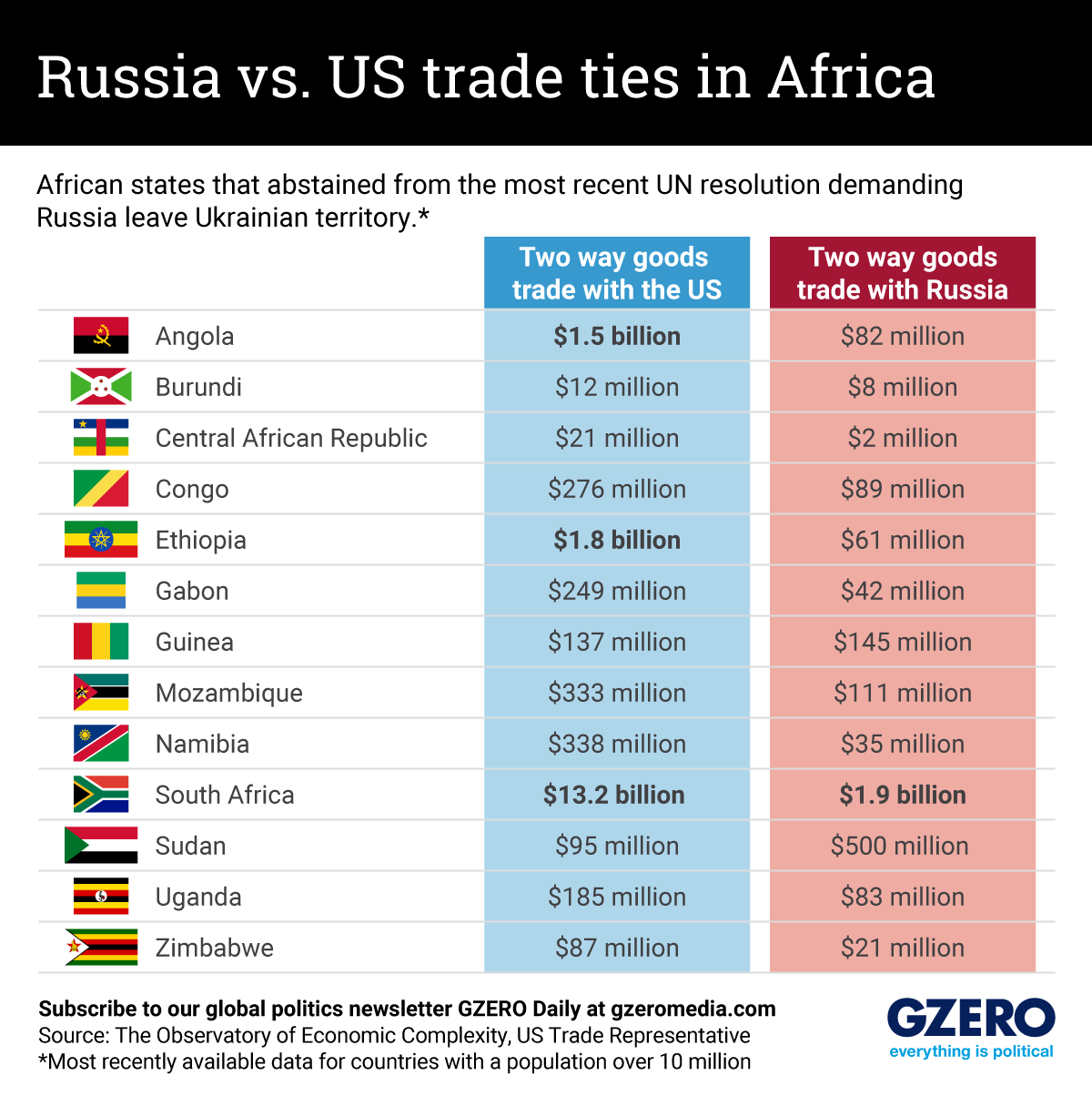February 26, 2023
On the one-year anniversary of Russia’s war in Ukraine, the UN General Assembly last week held a vote calling on Russian troops to leave Ukrainian territory. Those who opposed the resolution included the usual suspects that have aligned themselves closely with the Kremlin like Syria and Belarus, as well as Eritrea and Mali, which have close links to the Russian military.
Perhaps more interesting, however, is a look at those countries that abstained in a bid to reinforce their neutrality. Crucially, most of last week’s abstentions came from African states, which can be seen as a reflection of Russia’s growing political and economic clout in the region. But a look at bilateral trade relations between these African nations with Russia and the US, separately, shows that in most cases, two-way trade in goods with the US is way more lucrative.
Indeed, this suggests that Russia’s political leverage across the continent is multifarious. It comes from Russia’s vast reserves of oil, wheat and fertilizer — as well as its position in the global weapons trade, accounting for around half of all arms exports to Africa. We take a look at two-way trade between African states that abstained from the recent UN vote with the US and Russia, respectively.More For You
In this episode of Tools and Weapons, Microsoft Vice Chair and President Brad Smith sits down with Ed Policy, President and CEO of the Green Bay Packers, to discuss how purpose-driven leadership and innovation are shaping the future of one of the world’s most iconic sports franchises. Ed shares how technology and community-focused initiatives, from Titletown Tech to health and safety innovations on the field, are transforming not just the game of football, but the economy and culture of Green Bay itself. He explains how combining strategic vision with investment in local startups is keeping talent in the Midwest and creating opportunities that extend far beyond Lambeau Field.
Subscribe and find new episodes monthly, wherever you listen to podcasts.
Most Popular
Egyptians head to the polls to elect a new parliament during the first round of the Egyptian parliamentary elections in Giza, Egypt, on November 10, 2025.
Photo by Islam Safwat/NurPhoto
Egyptians are voting this month in parliamentary elections that aren’t expected to change who’s in charge, but could allow President Abdel Fattah el-Sisi to rule beyond 2030.
An injured soldier is transferred to a hospital following a clash between Thai and Cambodian troops over a disputed border area in Sisaket Province,Thailand, December 7, 2025.
Royal Thai Army/Handout via REUTERS
Thailand and Cambodia’s ceasefire is on the verge of collapse. Strikes were launched across their disputed border today, following clashes over the weekend that resulted in the death of a Thai soldier.
© 2025 GZERO Media. All Rights Reserved | A Eurasia Group media company.
